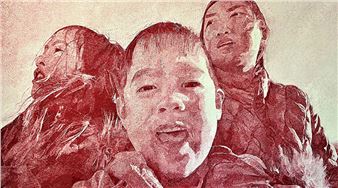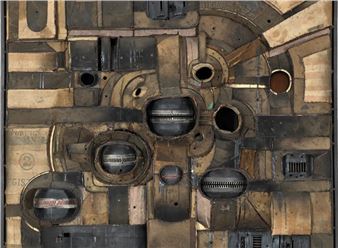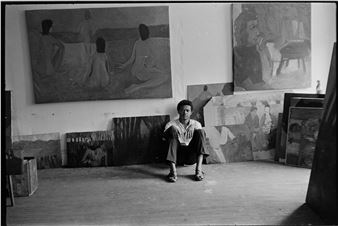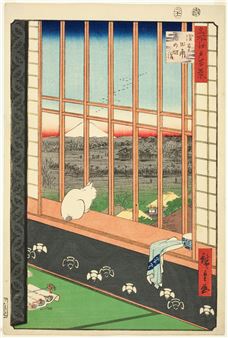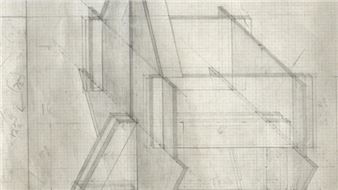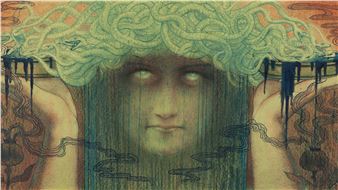Charles White: A Retrospective
Charles White (1918–1979) powerfully interpreted African American history, culture, and lives over the course of his four-decade career. A superbly gifted draftsman and printmaker as well as a talented mural and easel painter, White portrayed the truth, beauty, and dignity of life and people through an accessible realism. His works focus on the struggle for equality and self-possession and the heroic actions of African Americans, while expressing the universality of the human spirit. This exhibition—the first major retrospective of White’s work in more than 35 years—showcases a gifted and influential artist whose work continues to resonate amid today’s national dialogues about race, work, equality, and history.
Born in Chicago and educated at the School of the Art Institute, White was part of the city’s flourishing black artistic community of the 1930s. He was determined to employ art in the struggle for social change, declaring, “Paint is the only weapon I have with which to fight what I resent.” Influenced by Mexican muralists such as Diego Rivera, White completed several important mural commissions in the city, including one for a branch of the Chicago Public Library.
White married sculptor Elizabeth Catlett in 1941, and the couple soon settled in New York. Together they traveled to Mexico City, where White honed his printmaking skills as part of the printmaking collective known as the Taller de GrГЎfica Popular. In New York in the 1940s and early 1950s, White showed his work at the progressive ACA Gallery and was a prominent member of African American and leftist artist communities. White moved to Southern California in 1956, and his career flourished as he embraced drawing and printmaking more fully, pushing at the boundaries of his media while continuing to engage with civil rights and equality. Despite his rejection of the prevailing style of Abstract Expressionism and ongoing use of an expressive figuration, he found critical acclaim in the United States and abroad.
Charles White: A Retrospective unites a selection of White’s finest paintings, drawings, and prints, presenting the full breadth of his work and demonstrating his artistic development. The themes he explored—African American history and the fight for freedom, the nobility of black people, and the dignity of labor and human nature—reveal his talent and passion, and encourage viewers to consider current questions of history, politics, and identity in relation to the recent past.
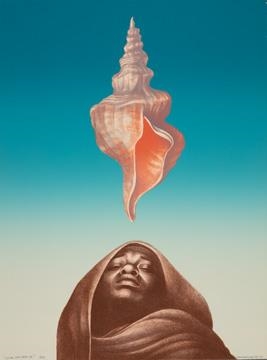
Recommended for you
Charles White (1918–1979) powerfully interpreted African American history, culture, and lives over the course of his four-decade career. A superbly gifted draftsman and printmaker as well as a talented mural and easel painter, White portrayed the truth, beauty, and dignity of life and people through an accessible realism. His works focus on the struggle for equality and self-possession and the heroic actions of African Americans, while expressing the universality of the human spirit. This exhibition—the first major retrospective of White’s work in more than 35 years—showcases a gifted and influential artist whose work continues to resonate amid today’s national dialogues about race, work, equality, and history.
Born in Chicago and educated at the School of the Art Institute, White was part of the city’s flourishing black artistic community of the 1930s. He was determined to employ art in the struggle for social change, declaring, “Paint is the only weapon I have with which to fight what I resent.” Influenced by Mexican muralists such as Diego Rivera, White completed several important mural commissions in the city, including one for a branch of the Chicago Public Library.
White married sculptor Elizabeth Catlett in 1941, and the couple soon settled in New York. Together they traveled to Mexico City, where White honed his printmaking skills as part of the printmaking collective known as the Taller de GrГЎfica Popular. In New York in the 1940s and early 1950s, White showed his work at the progressive ACA Gallery and was a prominent member of African American and leftist artist communities. White moved to Southern California in 1956, and his career flourished as he embraced drawing and printmaking more fully, pushing at the boundaries of his media while continuing to engage with civil rights and equality. Despite his rejection of the prevailing style of Abstract Expressionism and ongoing use of an expressive figuration, he found critical acclaim in the United States and abroad.
Charles White: A Retrospective unites a selection of White’s finest paintings, drawings, and prints, presenting the full breadth of his work and demonstrating his artistic development. The themes he explored—African American history and the fight for freedom, the nobility of black people, and the dignity of labor and human nature—reveal his talent and passion, and encourage viewers to consider current questions of history, politics, and identity in relation to the recent past.
Artists on show
Contact details

Related articles
Chicago, New York and Los Angeles to celebrate artist and activist after lengthy search for works
By 1968, Charles White had witnessed the Great Migration, the Great Depression and World War II; McCarthyism and the “Red Scare” of the 1950s; the Civil Rights movement, Black Arts and Black Power movements as well as liberation struggles that emerged from the remnants of...
While Klimt and Schiele are dazzling New York, the Pre-Raphaelites are making a splash in San Francisco — here’s our roundup of these and the other major exhibitions from Chicago to São Paulo that you won’t want to miss this summer
The collectors Denise and Gary Gardner are very public in their support of “Charles White: A Retrospective,” an exhibition now at the Art Institute of Chicago that will travel to the Museum of Modern of Art in the fall. They are listed as “lead individual sponsors.”

 ARTISTS
ARTISTS







